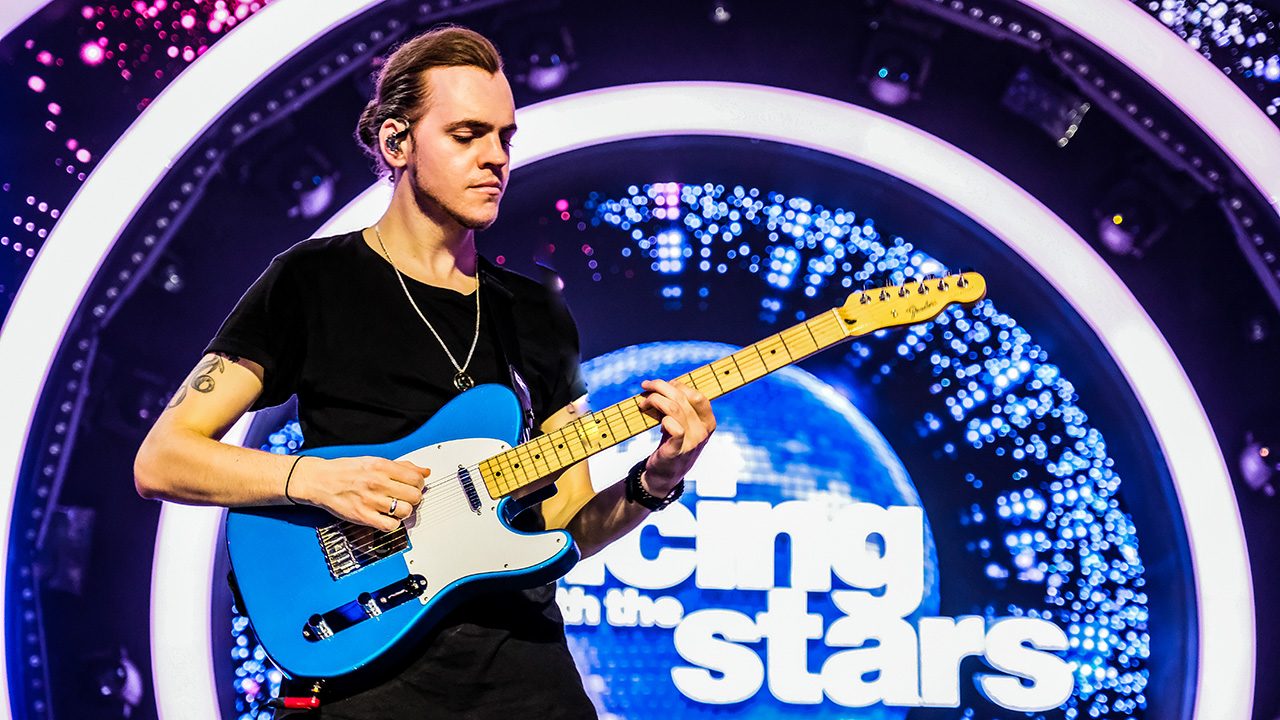
Guitarist Dan Maher fondly recalls the moment he landed his first proper TV gig. Following a pair of auditions for the Australian version of The Voice, the show’s musical director asked: “What are you doing for the next couple of weeks? ‘Cuz you’ve got 300 songs to learn.”
On the face of it, that’s an intimidating number – but the request seems quaint in comparison to the demands of a later gig with U.S. game show Name That Tune. “We had to perform 700 songs in the space of five weeks, but we had to learn 1,200,” Maher laughs of the latter experience. “No kidding – I didn’t sleep for seven weeks.”
Being familiar with oodles of songs within innumerable genres at the drop of the hat lends itself to Maher’s live work with artists including British pop singer Rita Ora, contemporary Queen belter Adam Lambert, and the post-reality show career of 2023 Australian Idol winner Royston Noelle.
But the TV circuit is where Maher has honed the craft of replication, having spent the past half-decade faithfully covering pop, rock, and country hits onstage for The Voice, Australia’s Got Talent, Name That Tune, and the most recent seasons of Australian Idol. He also preps backing tracks for broadcasts of Australia’s The Masked Singer.
“There’s just such an onslaught of different kinds of music to learn that it really does make you appreciate styles that maybe you wouldn’t have been super familiar with otherwise,” he says, shortly after an extensive audition cycle of Australian Idol, which entailed briefly supporting countless hopefuls with acoustic strums.
Currently on a break, he’s gearing himself up for “two straight months of madness and chaos” once contestants start belting it out for live broadcasts. From narrowly-avoided live gaffes, to prepping tracks for The Masked Singer’s cast of crash-test dummy crooners and evil avocados, Maher takes Guitar World through a few key points to the life of a busy TV guitarist.
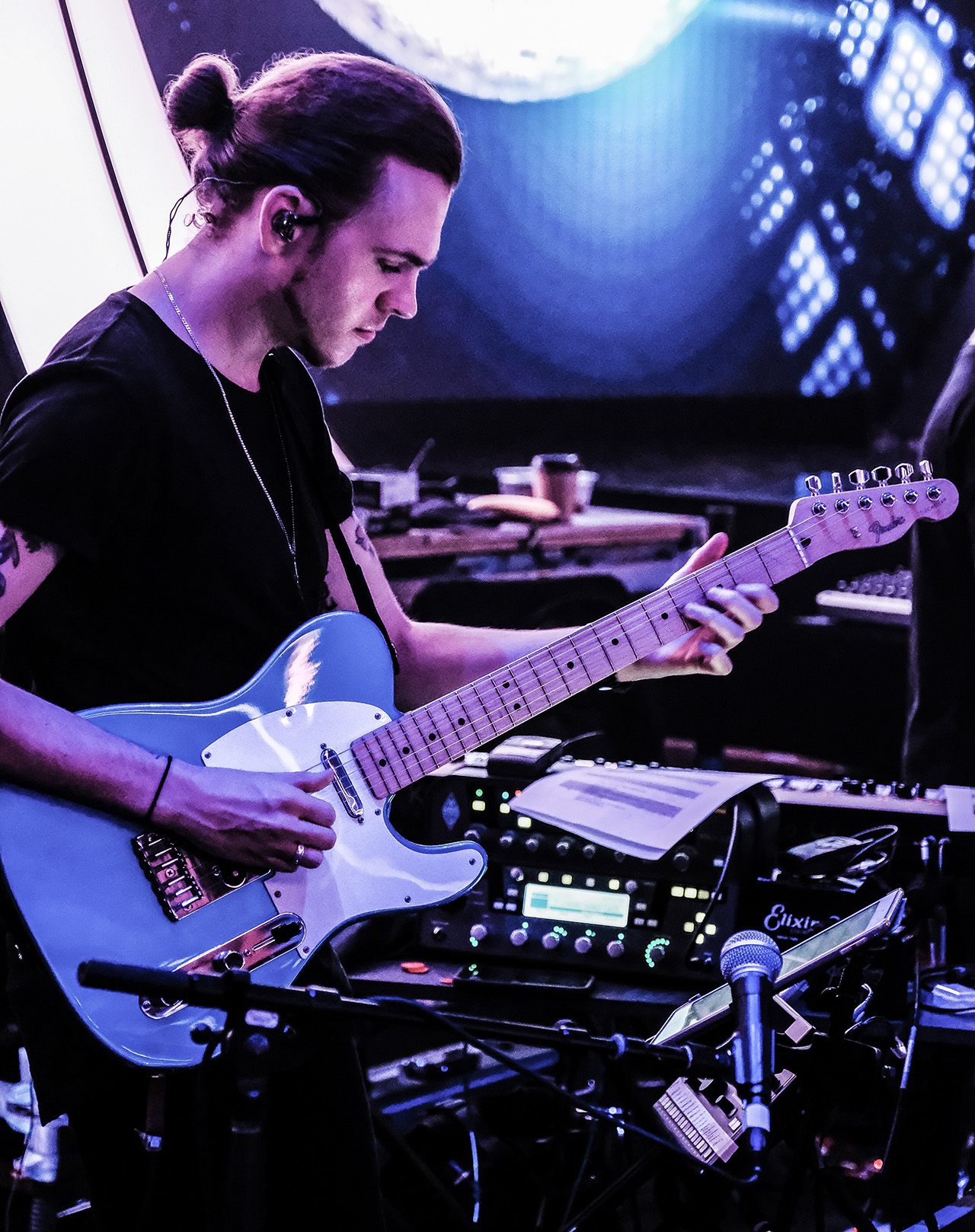
How did you break into TV?
“We had the original seasons of Australian Idol from 2003 onwards. I was in early high school and it was like a big deal for us here. I watched the show every week – looking at the band, how they were featured, the level that they were playing at – and I wanted to do that!
“Most kids in high school want to be a rock star, or in their own bands. Because I was so inspired by the people doing those kinds of gigs, I approached my career trajectory based on that kind of work. I would learn how to play other instruments like banjo, ukulele, and mandolin. I’d learn how to become a really good reader, because I knew those gigs required that skillset.
“I would be playing for a whole bunch of different artists, and we’d end up doing guest spots on morning television shows here in Australia. I ended up getting a call to do some mime work on The Voice. The show has their live band, but sometimes if there’s a featured artist from overseas coming to do a performance, and they’ll book some musicians to just mime to the track. The actual band on the show have a coffee break and the mime guys come out.
“I was really young, but it meant that I got to know the people working behind the scenes. While I wasn’t actually playing on the show, I got a sense of what it is to be involved in a production like that. Then a friend of mine ended up getting a job there, and he booked me for a few things that needed a live acoustic player. I think the fact that I could actually play sort of caught their attention, and then there was a change in the house band the following year.
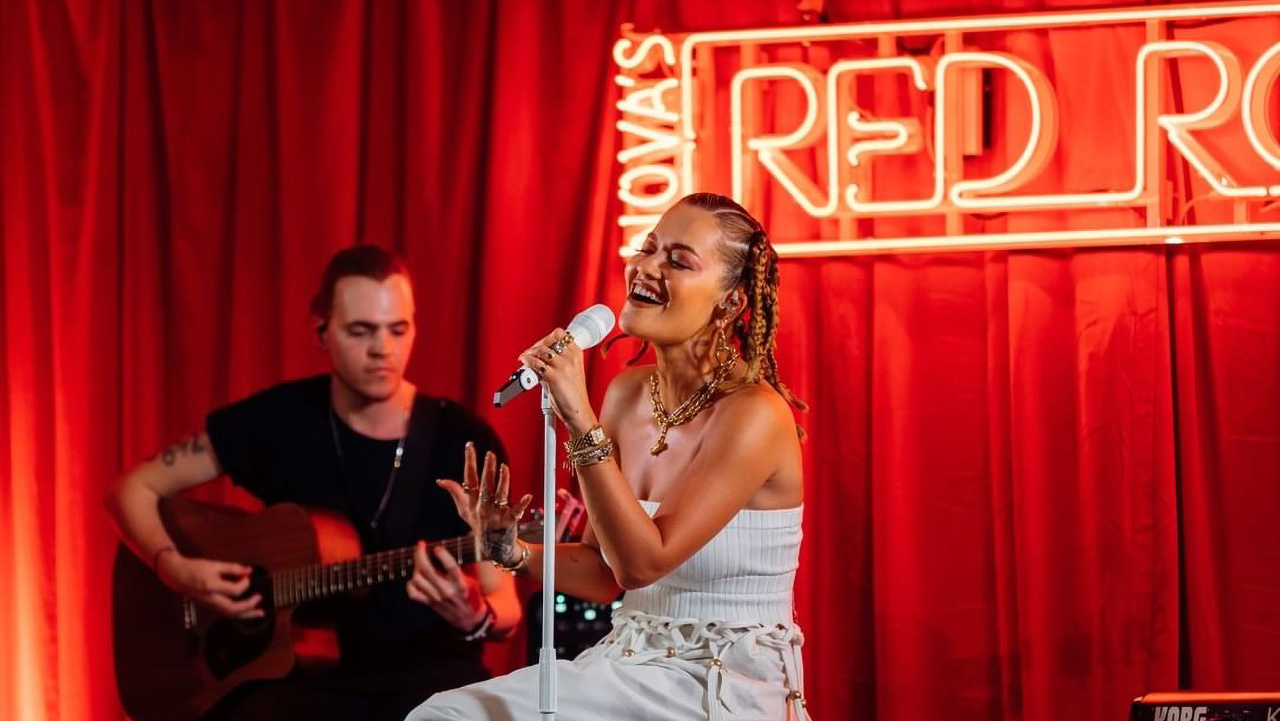
You started out miming on The Voice, but you were at least performing on-camera. In the case of The Masked Singer, you’re almost more incognito than the singer themselves. No one gets to see you!
“I’ve always felt like what I enjoy about collaboration is bringing other people’s visions to life. Or, in the context of TV, I like being part of a well-oiled machine. I like knowing my part and my place in the band. It’s not really about me at all, and I like that. Having said that, like any guitar player I love my moment to burn. If there’s a guitar solo, I’ll go for it. I don’t just meekly stand in the background. I’m cool to go out to the front to be the rock star for a moment.”
You mentioned on Instagram recently that you enjoyed getting into the acoustic tones of Coldplay’s Yellow for The Masked Singer, which happened to be sung by a vampire avocado. How much troubleshooting goes into a piece like that?
I don’t want to do the song an injustice by screwing it up or not taking the time to actually learn voicings or the tiny inflections
“I never thought that I would be playing for an avocado! For those kinds of shows, it’s really important to get the parts right. The Masked Singer’s musical director, Dorian West, he’s all about authenticity. He taught me a lot about recreating parts and really getting into details. I’ve gotten the opportunity to really delve deep into the details of tone. Unless we’re doing some obscure version of a track, it’s basically soundalike stuff.
“Yellow, specifically, was fun because that’s not quite as straightforward as it sounds; it’s in a different tuning. I don’t want to do the song an injustice or disservice by screwing it up or not taking the time to actually learn voicings or the tiny inflections in the rhythms.
“As far as troubleshooting goes, there’s not a whole lot when it comes to recording; the troubleshooting comes for the live band. There are so many things that can go wrong when you’re live on TV. For example, reading my charts off my iPad. On The Voice I had a FaceTime call come through and block the whole screen so I couldn’t see my charts.
“Thank God it was towards the end of the song and I knew it well enough, but if I was reading note-by-note I would have absolutely messed that song up. Now I put my iPad on flat mode so no notifications come through. That might seem like a rookie error, and it probably was, but I’m glad I learned… I might’ve really ruined my reputation.”
“I played AC/DC’s Thunderstruck on Dancing with the Stars one year, and I was so nervous. It’s a really fiddly part, a bit of a tightrope. One wrong foot and it’s all over. A lot of people play that song with all hammer-ons and pull-offs, but every note of that is picked. Once you’ve settled into the groove it’s fine, but getting into that groove can be tough.
“I remember, though, I was absolutely dying to go to the bathroom before we played that song. This is all live-to-air, but we were on a commercial break, so I got on the talkback mic to the musical director and said I had to run to the bathroom quickly. I got back right before this track, but I was in a crazy panic for a moment. If I was 30 seconds late, the song would have started without me.
“But it also meant that I had no time to sit there being nervous about playing the song. And I just couldn’t have played it better. If I had spent five minutes of a commercial break going ‘Oh, shit, don’t fuck it up,’ I probably would have fucked it up!”
How does the concept of versatility apply to your gear for these shows?
“I love using these gigs as an excuse to use every guitar that I have. So much of it comes down to authenticity of the parts and the sounds, so if I have a guitar that is the sound, I won’t just stick to my main guitar. What’s the point in having all these tools if you’re not going to use them when the time calls for it? I’ll use everything at my disposal.
“My two main guitars are just a Fender ProAm Strat and a Music Man Luke 2, and I find that between those two I can pretty much cover everything. But just because I can doesn’t mean I like to. I’ve got a Tele, and a bunch of Gibsons and Strats. I’ve got some Ibanez guitars, a bunch of acoustics, a banjo, a ukulele. All that stuff.
“And the Kemper is very guitar-specific, I find. If I create a great sound for one particular Strat, that doesn’t necessarily sound great with my other Strats. It’s just about going through and finding the right guitar for the right sound. Just by listening to the song I have a pretty good sense of what guitar is going to work best, and which amp model, but I’ll always use as many guitars as I need to get the sound.”
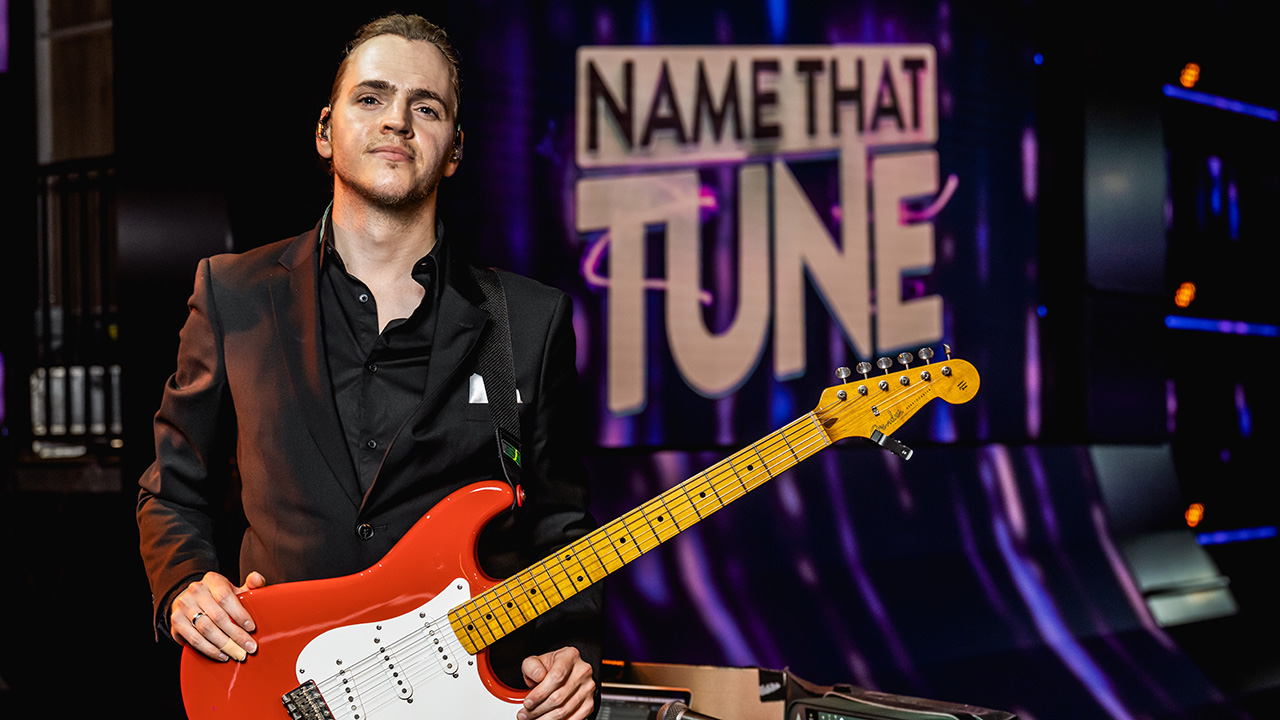
Did you SG your way through that Dancing with the Stars performance of Thunderstruck?
“I absolutely SG’ed through that. It’s not an Angus Young model, it’s a Derek Trucks signature. I don’t know if it’s a psychological thing or not, but the fact that you’re playing an SG for an AC/DC track just feels like the real deal. And that’s what I mean, from earlier – I brought that guitar just for that one song. I didn’t use it for the rest of the season.”
On The Masked Singer, do you know who the singers are, or are you just as surprised with those reveals?
“Not even the music director who employs me for the gig knows. They walk around the set with a cotton bag over their head so no one can see who they are. I genuinely have no idea who these people are until I see them on TV.”
In the earliest stages of the show, you don’t really get to talk to anyone. As the contestant pool gets smaller there’s more rehearsal time… so you start to develop rapports.
“I’ve been doing all that stuff from home. You’d think that we’d be in a studio recording all these tracks together, but we’re working off a Google document. Every day I’ll check to see if new tracks have been added, or a guide template to pull into Logic. I send my own stems back, and whoever is mixing the track just pulls all the parts in from this Google document. We don’t really see or speak to anyone involved. It’s bizarre when you break it down like that.
As the Idol season progresses, then, do you have more of a personal connection with those contestants?
“Definitely. In the earliest stages of the show, you don’t really get to talk to anyone. But as the series goes on and the contestant pool gets smaller there’s more rehearsal time. Instead of getting one-throughs, you’re getting an hour-and-a-half to run through tracks with the contestants. And there’s hang-time in the green rooms, so you start to develop rapports.”
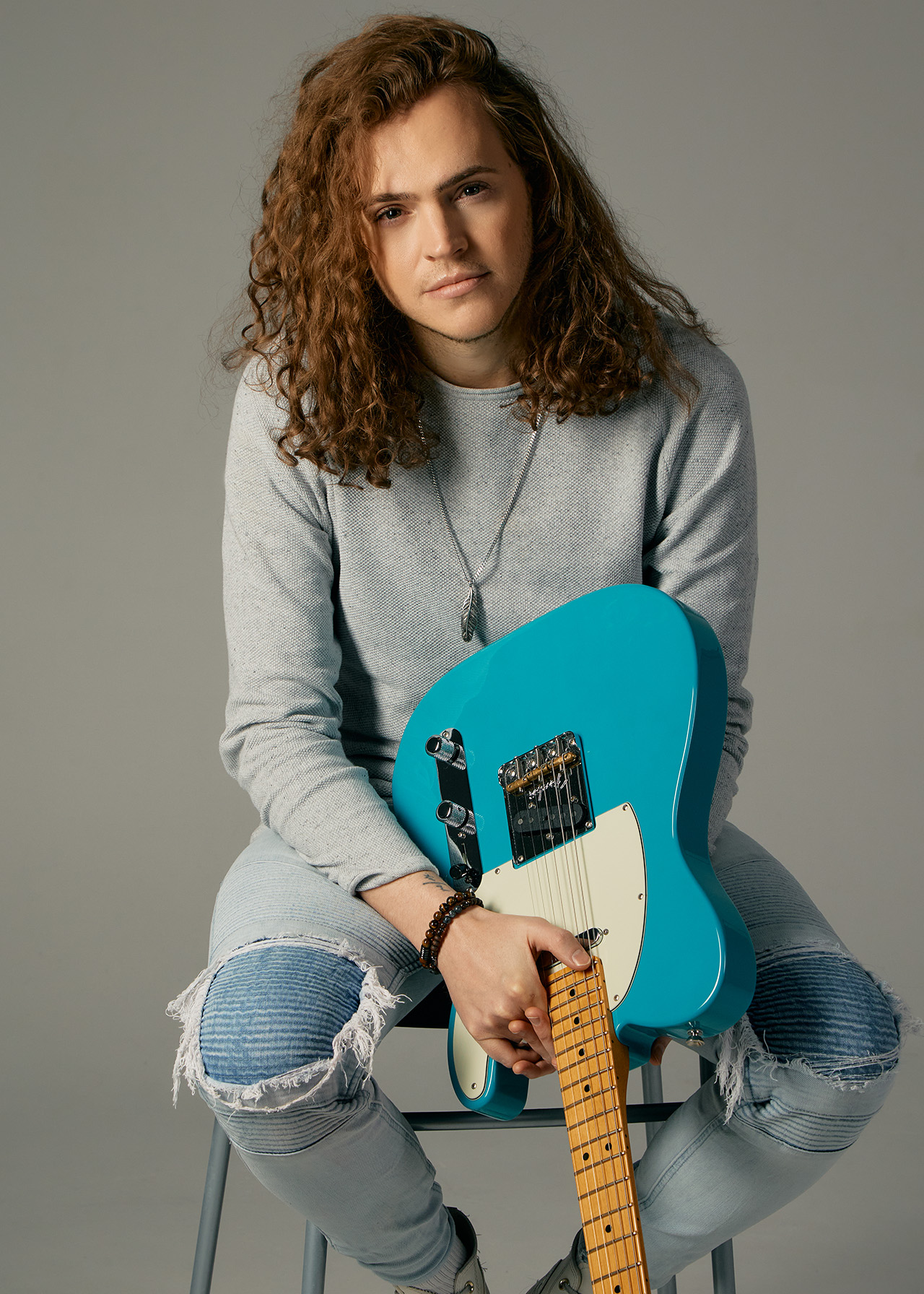
“For example, the winner of the show last season was Royston Noelle. I’ve gone from seeing him in the auditions, and throughout every stage of the show, and now I’m music directing for him on the other side. Now I get to tour and create with him. He’s signed to Sony Music, and he’s actually living his career! To be a part of that is really cool.
Were Royston to dress up in a Masked Singer costume, do you think you could pick out his voice right away?
“Absolutely. Actually, there was an artist that I worked, Bonnie Anderson, who was the winner of Australia’s Got Talent many years ago. We’ve done a lot of work since. She was actually on The Masked Singer a couple of years ago, and I sent her a message going ‘I know for a fact that it’s you!’
“She was obviously not allowed to say. She ended up going on to win The Masked Singer, and as soon as she was unmasked [Anderson was the rusty, copper-plated ‘Bushranger’] I sent another text that said ‘I bloody well knew it was you!’”
- For more info, head to DanMaherCreative.com.







